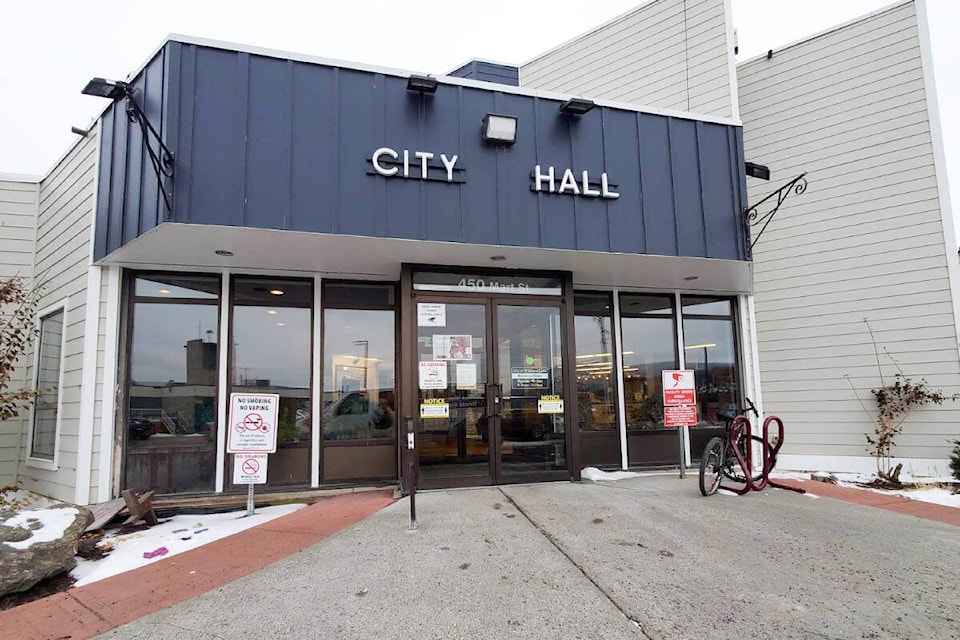Williams Lake city council is considering leaving the mill rate the same this year, but not all of council agrees.
The move could mean a residential tax increase of about $281 per year, or $23 per month, on an average house in Williams Lake, explained Coun. Joan Flaspohler.
Last year the mill rate was lowered by 10 points because, had it not been, the residential tax rate would have increased by 25.5 per cent due to higher property assessments.
During a special budget meeting Tuesday, April 11, council voted five-to-two in favour of keeping the mill rate the same, with councillors Scott Nelson and Sheila Boehm opposed.
The motion will now go to the regular meeting Tuesday, April 18 for a final vote.
Flaspohler, who is finance chair, told the Tribune Wednesday, keeping the mill rate the same, or as presented in previous years as a zero tax rate increase, still means an 11.1 per cent taxation increase to the community as a whole and 16.5 per cent for residential properties.
“Last year there was an overall nine percent increase and 12.8 per cent to residential classes,” she said.
Even with the 11.1 per cent increase the city will still have to dip into a small portion of the city’s surpluses and utilize the $3.7 million coming from the provincial government for the Growing Communities Fund grant, Flaspohler said.
“This year’s budget addressed important infrastructure requirements,” she said. “Items that have been deferred in previous years such as water well replacement, bio solid removals and full road reconstruction, not only resurfacing.”
Mayor Surinderpal Rathor said the budget has been worked on by the entire city council with staff over several meetings and also reflects the inflation rate which is nine per cent this year, up from two per cent last year.
“Projects have been put off for years,” Rathor said, noting the water treatment plant the city needs to remove manganese estimated at $12 million several years ago is now priced at $25 million.
Rathor said council wants to be transparent and tell people the facts.
“We are not changing the mill rate, but you have to pay more taxes.”
Using his own residential taxes as an example, Rathor said he paid $658 more in 2022 and will pay $424 more in 2023.
Councillor Nelson took to social media Wednesday to voice his opposition and is conducting a poll about the mill rate not being lowered.
He told the Tribune he thinks by not lowering the mill rate the city will be put into more debt because it is basing the city’s budget on the artificially high property assessments in place right now.
“Things will go down, a mill could close, and there will be no way out of this hole,” Nelson said.
“There is no way we can complete everything that is in the budget for 2023.”
Each year cities set the mill rate based on the total value of property within the city to provide the necessary tax revenue to cover expenses.
READ MORE: B.C. property assessments higher, but market has changed: assessor
READ MORE: OPINION: B.C. Realtor’s explanation how property assessment increases do not affect taxes
monica.lamb-yorski@wltribune.com
Like us on Facebook and follow us on Twitter
